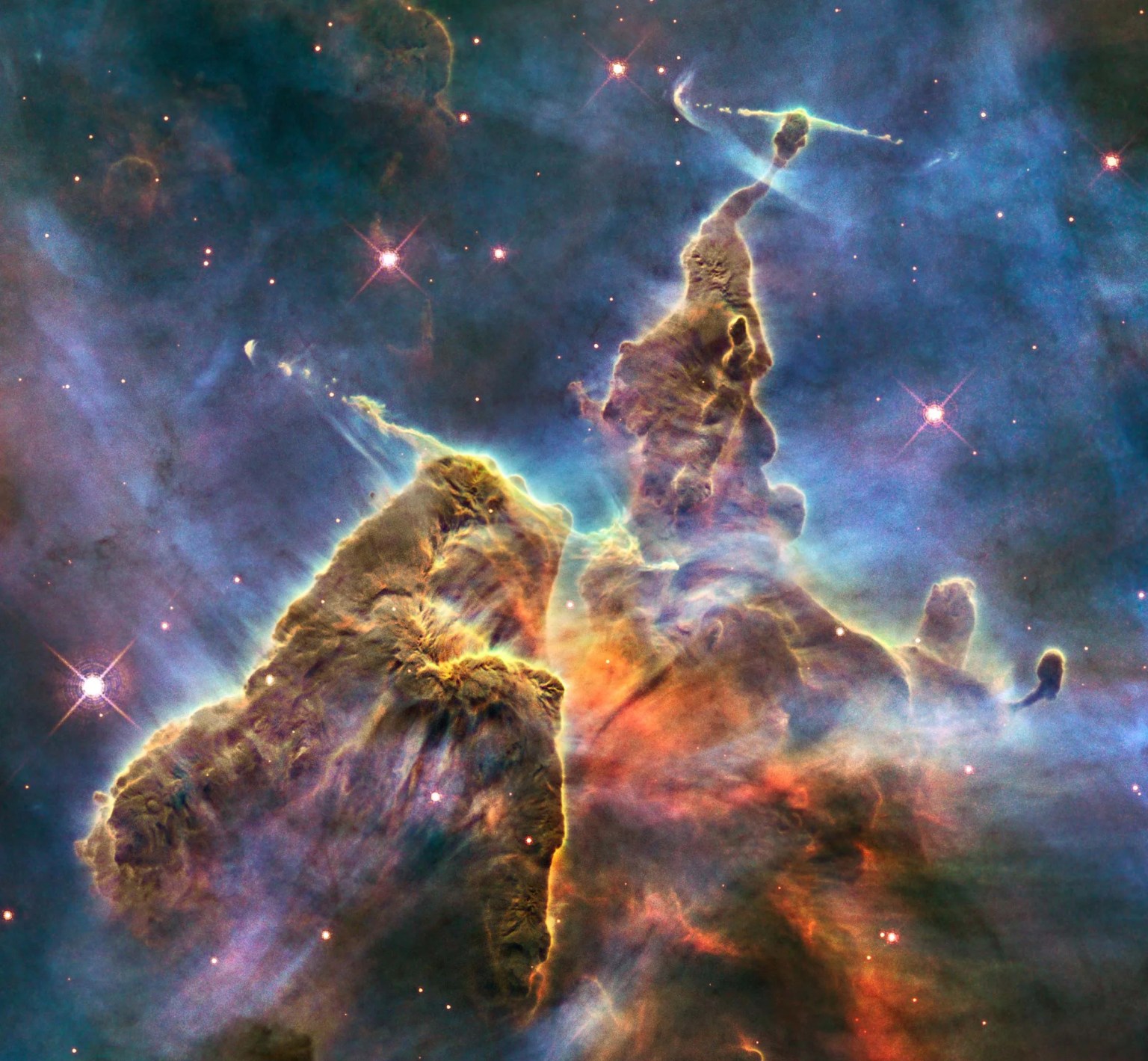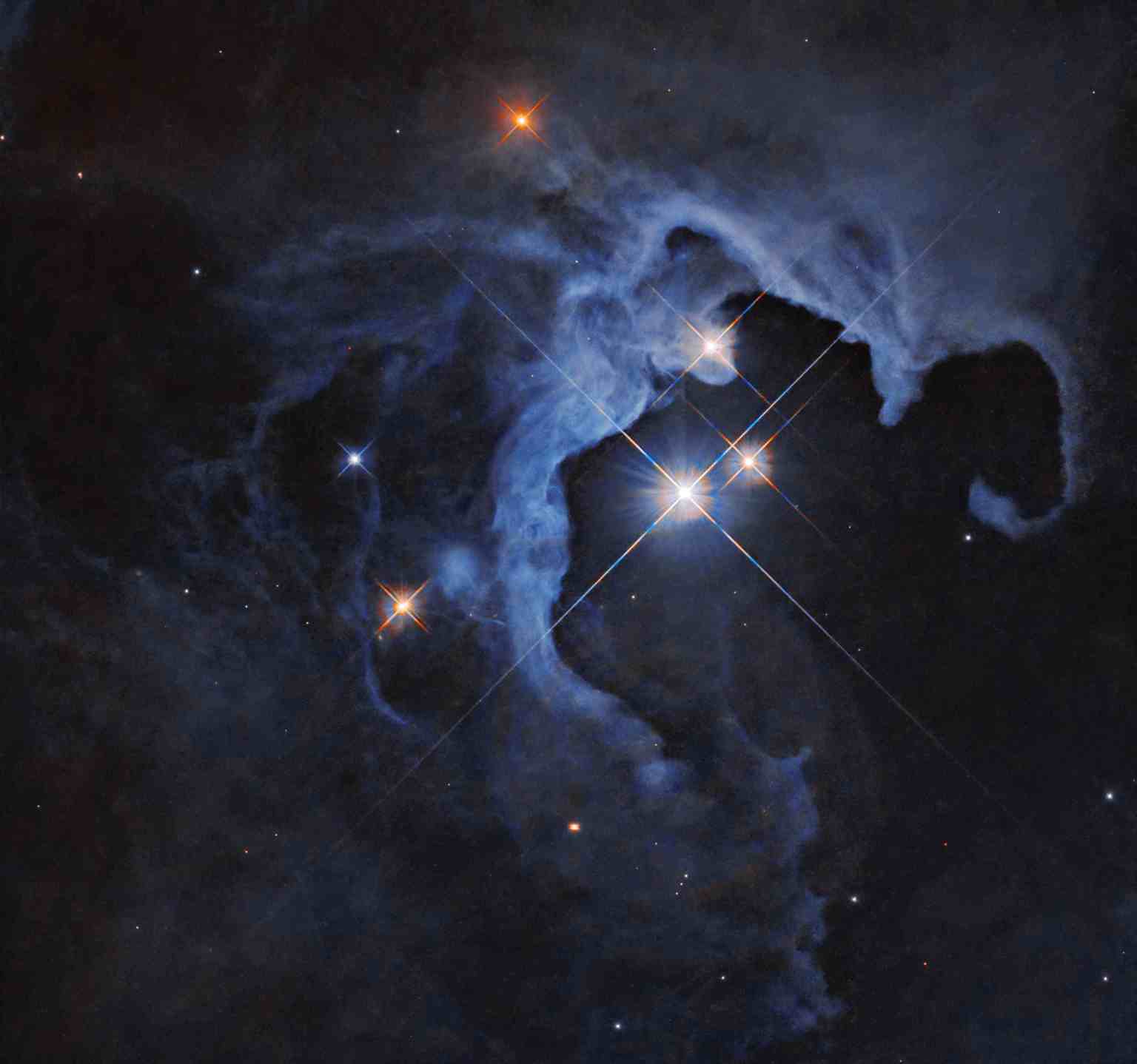Eagle Nebula Pillar

Though this towering structure of billowing gas and dark, obscuring dust is only a small portion of the Eagle Nebula (Messier 16), it is no less majestic in appearance for it. The pillar rises 9.5 light-years tall and is 7,000 light-years away from Earth. This latest Hubble view uses new processing techniques and is part of ESA/Hubble’s 35th anniversary celebrations.
The cosmic cloud is primarily cold hydrogen gas, like the rest of the Eagle Nebula. In regions like this, new stars are born among the collapsing clouds. Hot, energetic, and formed in great numbers, the young stars unleash an onslaught of ultraviolet light and stellar winds that sculpt the gas clouds around them. This produces fanciful shapes like the narrow pillar with a blossoming head that we see here. The material in the pillar is thick and opaque to light; its edges outlined by the glow of more distant gas behind it. Emission from ionized oxygen dominates the blue colors of the background; the red colors lower down, glowing hydrogen. Orange indicates starlight that managed to break through the dark dust which blocks bluer wavelengths more easily leaving the redder light to pass through.
The stars responsible for carving this intricate structure lie just out of view, at the Eagle Nebula’s center. As their radiation pressure batters and compresses the gas in this tower of clouds, it could be igniting further star formation within the pillar. While the pillar withstood these forces well so far, cutting an impressive shape against the background, the radiation pressure from the multitude of new stars that form in the Eagle Nebula will eventually erode it away.
About the Object
- R.A. PositionR.A. PositionRight ascension – analogous to longitude – is one component of an object's position.18 19 16.36
- Dec. PositionDec. PositionDeclination – analogous to latitude – is one component of an object's position.-13° 45' 23.64"
- ConstellationConstellationOne of 88 recognized regions of the celestial sphere in which the object appears.Serpens Cauda
- DistanceDistanceThe physical distance from Earth to the astronomical object. Distances within our solar system are usually measured in Astronomical Units (AU). Distances between stars are usually measured in light-years. Interstellar distances can also be measured in parsecs.7,000 light years
About the Data
- Data DescriptionData DescriptionProposal: A description of the observations, their scientific justification, and the links to the data available in the science archive.
Science Team: The astronomers who planned the observations and analyzed the data. "PI" refers to the Principal Investigator.This image was developed using data from the Hubble observing program #10393 (PI: K. Noll).
- Object NameObject NameA name or catalog number that astronomers use to identify an astronomical object.Eagle Nebula, Messier 16
- Object DescriptionObject DescriptionThe type of astronomical object.Nebula
- Release DateApril 18, 2025
- Science ReleaseHubble Spies Cosmic Pillar in Eagle Nebula
- CreditESA/Hubble & NASA, K. Noll
Share
Details
Claire Andreoli
NASA’s Goddard Space Flight Center
Greenbelt, Maryland
claire.andreoli@nasa.gov
Bethany Downer
ESA/Hubble
bethany.downer@esahubble.org
Garching, Germany






























